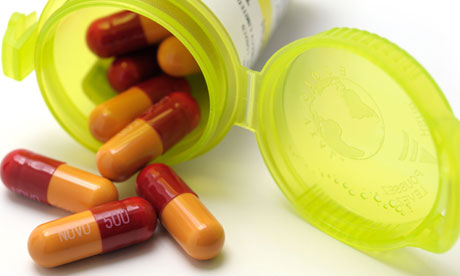The Good ,The Bad ,and The Ugly
Hey guys welcome back thebestscienceblog here and today I will be talking about antibiotics and how they effect our everyday life.
Bacteria are helpful and nonhelpful to us for an array of reasons. Bacteria help us because they help digest food in our intestines.They have helped our food industry make foods like cheese, pickles, and vinegar. Bacteria are also not helpful because they are the reason we have many diseases today.
Antibiotics have proved to be the same way as bacteria. They are good and bad depending on how you use them. Antibiotics are drugs used to kill bacteria or stop them from reproducing.
Doctors prescribe these to you when you are sick and have a disease inside of you. Antibiotics are becoming less useful to fight bacteria because they are being overused. When they are overused the antibiotics only kill the weak bacteria and let the strongest survive instead of killing all of them.
Now I will be talking about how some bacteria are harmful and get into the human body.Bacteria multiply at a fascinating rate of one new bacteria every twenty minutes. Since bacteria reproduce so often things called genetic mutations happen a lot.
Genetic mutations are changes in its genetic code that alter its development and growth. When this happens the bacteria can become either weaker or stronger. When they become stronger they have a higher chance of being antibiotic resistant. At this point the bacteria can make copies of themselves and make a whole community sick.
Three bacterial diseases I will be talking about are MRSA, Tuberculosis, and Diphtheria.

MRSA is a super bug that has been springing up around the world. MRSA causes infections on the skin including sores and boils. It is caused by staph in our body getting infected.
 Tuberculosis is a disease in which it breaks down your respiratorial tissue and forms cavities in the lungs.It often causes the person to cough up bright red blood.
Tuberculosis is a disease in which it breaks down your respiratorial tissue and forms cavities in the lungs.It often causes the person to cough up bright red blood. Diphtheria is caused when droplets of respiratorial secretion are passed through the air. This usually happens when you cough on somebody. Symptoms are moderate fever, fatigue, or chills.
Diphtheria is caused when droplets of respiratorial secretion are passed through the air. This usually happens when you cough on somebody. Symptoms are moderate fever, fatigue, or chills.Nitrogen fixing bacteria help plants and animals by changing atmospheric nitrogen into fixed oxygen. This helps because it makes it easier for the plants to give humans and animals oxygen.
Pasteurization is the process of heating a food, usually a liquid, to a specific temperature and time then immediately cooling it. it is important because it helps kill bad microorganisms in the food.
Links




